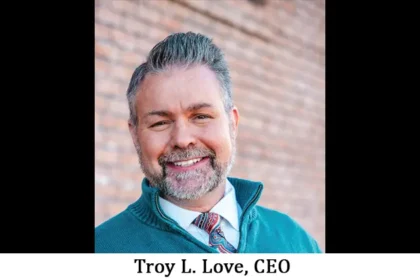Luxury retail in Latin America is experiencing a rapid boom, with several factors contributing to the surge in demand for high-end products. In the past decade, the region has become one of the most attractive markets for luxury brands looking to expand their footprint. As more affluent consumers emerge in Latin America, the luxury market is growing, with global brands tailoring their strategies to meet local demands.
This article delves into the driving forces behind Latin America’s luxury retail boom, highlighting the economic, cultural, and technological trends that are reshaping the industry. Key insights from experts like Martin Pereyra Rozas, who has vast experience in luxury market expansions across the region, offer valuable perspectives on how brands can successfully navigate and capitalize on this growing market.
A Growing Affluent Class in LATAM
Latin America’s expanding middle class is one of the key contributors to the booming luxury retail market. Over the past few years, the region has seen a significant increase in its affluent population, especially in countries like Brazil, Mexico, Argentina, and Chile. As disposable income rises and wealth becomes more concentrated, a larger percentage of consumers now have access to luxury goods.
According to Martin Pereyra Rozas, luxury brands need to recognize the region’s growing demand for high-end products and services. He highlights that this increase in the affluent class is not just about purchasing power but also about shifting consumer behavior and aspirations. More and more LATAM consumers are seeking products that reflect their social status and individual identity, making the luxury market increasingly competitive.
Changing Consumer Behavior
As the affluent class grows, so does the desire for personalized experiences. Consumers in Latin America are no longer satisfied with merely purchasing a luxury item—they want to be part of a lifestyle, a story, and an experience that resonates with their values and aspirations.
For example, brands in Latin America are seeing a significant shift from mass-market luxury to highly personalized and exclusive offerings. The rise of bespoke products, limited-edition collections, and tailored services is a testament to how luxury is being redefined in the region.
The younger generation, especially Millennials and Gen Z, is driving this trend. This demographic is highly digitally connected and values uniqueness and personalization. In this regard, brands like those in the fashion, automotive, and fine jewelry sectors are shifting their focus to personalization, offering one-on-one consultations, exclusive designs, and curated shopping experiences.
As Pereyra Rozas explains, “The key to success in Latin America is not just about exclusivity but how brands connect with consumers on an emotional level, offering them more than just a product. They are selling a piece of an aspirational lifestyle.”
The Impact of E-Commerce and Digital Transformation
The digital revolution is another major force reshaping luxury retail in Latin America. While physical stores remain vital, the rapid adoption of online shopping and mobile commerce has made it necessary for luxury brands to establish a strong digital presence.
In recent years, brands in LATAM have seen a rapid increase in online luxury purchases, driven by consumer demand for convenience and the growing prevalence of digital payment methods. The COVID-19 pandemic accelerated this shift, making e-commerce a crucial part of the luxury retail strategy.
Pereyra Rozas has seen how luxury brands are increasingly investing in digital channels to reach the region’s tech-savvy consumers. He emphasizes that, while brick-and-mortar stores are still central to the luxury experience, online platforms provide an opportunity to engage with a broader audience and offer a seamless, omni-channel experience. Consumers want to explore products online before making an in-store purchase, and luxury brands are adapting to this trend by creating interactive, rich digital experiences that complement their in-store offerings.
The Role of Sustainability and Ethical Consumption
Sustainability is also becoming a key driver of growth in the Latin American luxury market. As global awareness about environmental issues grows, LATAM consumers, particularly younger generations, are demanding more sustainable practices from the brands they purchase from. This includes everything from the sourcing of materials to eco-friendly packaging and carbon-neutral production processes.
Luxury brands that have aligned themselves with sustainability initiatives are not only gaining consumer loyalty but also capturing the attention of affluent consumers who are increasingly looking to make ethical purchasing decisions. Whether it’s in the fashion industry, where brands are focusing on sustainable fabrics, or in the luxury automotive sector, where electric and hybrid vehicles are becoming more popular, sustainability has become a core value for many LATAM luxury consumers.
Pereyra Rozas highlights that consumers in LATAM are no longer just seeking high-quality products; they are seeking brands that reflect their values and contribute to positive change. “Sustainability and ethical consumption are no longer trends—they are the future of the luxury industry in Latin America,” says Pereyra Rozas.
Localizing Luxury for the LATAM Market
One of the most important lessons for luxury brands entering Latin America is the need to localize. The region is not a monolith; each country has distinct consumer behaviors, economic realities, and cultural preferences. As a result, global luxury brands must tailor their products and marketing strategies to the unique characteristics of each market.
In Brazil, for example, luxury brands must consider the country’s vast geographical size and regional differences, while in Mexico and Chile, cultural nuances related to history and tradition play an important role in shaping luxury consumer behavior.
According to Martin Pereyra Rozas, successful luxury brands in LATAM are those that embrace local culture and values while maintaining the global prestige of their products. They understand that luxury in Latin America is not just about status—it’s about creating a connection to a deeper, often cultural, narrative that resonates with consumers on a personal level.
Conclusion
The luxury retail sector in Latin America is booming, driven by a growing affluent class, shifting consumer behaviors, the digital transformation, and a greater emphasis on sustainability. To capitalize on this growth, luxury brands must understand the intricacies of the LATAM market and adapt their strategies accordingly.
As Martin Pereyra Rozas advises, “Success in LATAM requires more than just entering the market. It requires understanding the culture, values, and aspirations of Latin American consumers and offering them experiences and products that resonate on a deeper level.”
Luxury retail’s rise in Latin America presents a significant opportunity for brands to not only expand but thrive in a rapidly evolving market. By embracing local culture, integrating sustainability, and leveraging digital tools, brands can secure long-term success in one of the world’s most exciting luxury markets.










